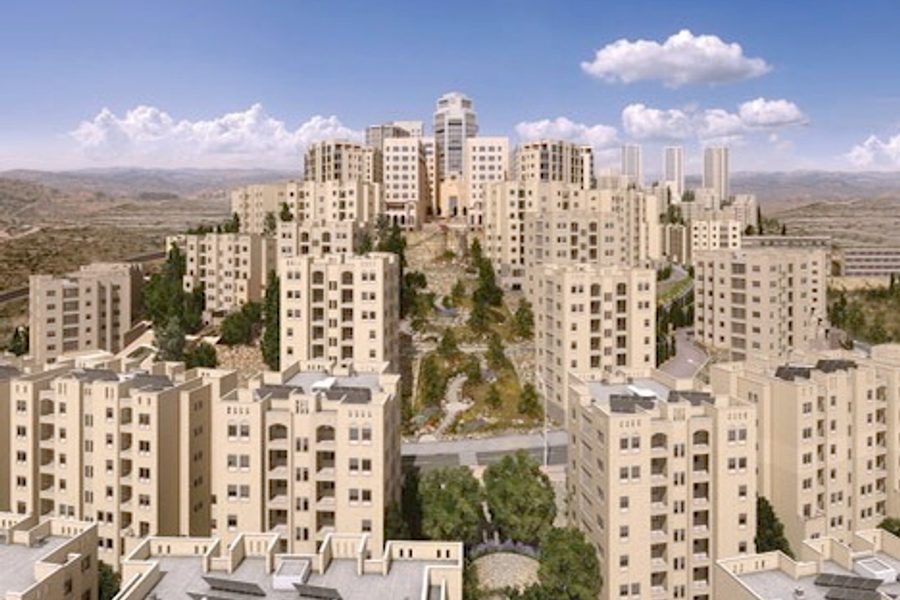Netanyahu’s Not So Secret Plan
Netanyahu is creating an Israel that will stretch from the Jordan to the Mediterranean Sea.
Marilyn Katz

With the current spats between Israeli Prime Minister Benjamin Netanyahu and the White House over Iran dominating the headlines and speculation about the Israeli elections that will occur on Tuesday, it was easy to miss two small news items from Israel. One reported Israel’s allocation of $46 million to encourage European immigration. The other, buried in the middle of a report on Netanyahu’s visit – reported that “as a gesture of good will” toward President Obama, after nine-years of refusal, Netanyahu had agreed to grant the newly-built Palestinian city of Rawabi access to water.
While easy to miss, these stories are important. For together they provide insight into the real goals and strategy of Netanyahu and his center-right allies as well as potential path for those who find the status quo both repugnant and unsustainable .
Despite a virtual black-out of reportage on it the Israel media and little more in the world press, Rawabi is the first and a truly extraordinary new city being built by Palestinians for Palestinians in the West Bank. Conceived of and financed by a consortium led by Palestinian-American Bashir al-Masri, when complete the city will be home to 40,000 residents. Since construction began in 2008 Rawabi has become the largest private employer in Palestine, employing 5,000 men and women who have already completed the construction of churches and mosques, a shopping center, schools, recreational facilities and have built and sold nearly 1000 homes.
It was never easy as Israel controls all supplies in and out of Palestine, all roads, water and air space (don’t try to use your smart phone on the West Bank) and continually threw up roadblocks to progress — from making the permitting process (which it controls) hell and periodically denying road access to Rawabi by suppliers and workers.
But by the time I first visited in October of 2013, using materials either stock-piled or made on-site the fundamentals of the city were in place — including churches, schools, a recreational building and fields, an office building and the first 1,000 homes were nearly complete. While they hadn’t been granted permission to widen or reclassify the road (from Area C which means fully under control of Israel) the staff was confident that they would finally get permission to hook into the national water system — thereby allowing them the first thousand to be habitable and sold.
When I returned six months later, with a delegation made up of community leaders and members of Congress, nearly 1,000 homes had been sold but no move-ins had occurred as Israel was still denying Rawabi water. Even then the mood was upbeat and the staff hopeful. However, when friends visited in December 2014, with no water still, with costs mounting and home buyers asking for return of their deposits, and bankruptcy looming, the staff was mainly anxious.
In February there was finally some ‘good news’ from Rawabi. As reported widely, the Coordinator of Government Activities in the Territories, Maj. Gen. Yoav (Poli) Mordechai, had approved Rawabi’s water connection. But that joy was short lived. As Al-Monitor reported, a few days later Mordechai’s approval had been negated by a higher-echelon Israeli — who ruled that the water could not be connected until it was approved at a meeting of the Israeli-Palestinian Joint Water Committee (JWC) — a body which had not met once in the past five years (although the absence of meetings has not stopped Israel from granting water rights to dozens of settlements during that time).
It was in this context that Netanyahu overruled all and granted Rawabi water — although still not road rights, guaranteed electricity or the ability (necessary to its success as a business center) to have 4G and full internet functionality.
Why might one ask would Israel make the building of Rawabi so difficult? Why would it deny access to water — the most basic and fundamental of needs? The answer lies in both the history, and the Netanyahu/Leiberman vision of the future, of Israel.
No matter what lip service Netanyahu pays to the idea of two states, it has become increasingly clear from his actions and the words of his rightist allies that the real goal is a single Jewish-controlled state, from the River Jordan to the Mediterranean Sea, from Syria to Egypt.
But Netanyahu and Lieberman, et al., have a problem. Israel was founded as and purports to be a Jewish and democratic state. While already many question Netanyahu’s use of the term “Jewish state” to describe a nation where only 70 percernt of the population is Jewish, the territory coveted by the expansionists presents an even greater problem. Within the land from the river to the sea live virtually equal numbers of Jews and Palestinians, although Palestinians have a higher birth rate. Ergo if the expanded space were to be a democratic state, it would not be a Jewish one; while if it were to be a Jewish state, it would not be democratic.
The Netanyahu/Lieberman solution to this dilemma is to change the facts on the ground – – by using the pull/push strategy of immigration and expulsion that upon examination has been the story of Israel all along.
At the turn of the 20th century when Theodore Herzl and others began what they termed the “Zionist project,” Jews represented only about 3 percent of the population. By 1948 on the eve of Partition, the massive influx of Jews fleeing the pogroms and then Nazism in Europe grew to 543,000, but they still comprised only 32 percent of the 2 million people living in the British Mandate.
Immigration alone was never enough. Only the massive exodus of Palestinians in the face of the Israeli army following the Partition changed the equation. In little more than a year as many as 1 million Palestinians fled or were forced from their homes, which the newly minted State of Israel immediately expropriated and to which they were not then or ever allowed to return.
By 1950, Israel had a population of 1, 370,000 with only 150,000 Palestinians remaining. While East Jerusalem, the West Bank and Gaza became home to 1 million Palestinians, virtually all Israel finally had a Jewish majority — a majority maintained for 70 years by immigration (2 million since 1970), selective expulsions, and stifling of Palestinian growth.
As any one who has been to or works with Palestinians knows - even putting aside mass incarcerations, military raids and settler violence – life on the West Bank is difficult. Already crowded into a mere 40 percent of their former lands through the use of expropriations of land, homes and water; the building of barrier walls and restricted roads, Palestinians living on the West Bank face a web of Kafkaesque measures that circumscribe every part of life, from a byzantine “pass system” for travel to Israel (and denial of use of its airport) to controls on what roads they can drive or walk on, if and when they can build a home, and whether they have access to water, the internet, or even modern wireless telephone service. It is these conditions that account for a 25 percent unemployment rate in the best educated Arab nation in the Middle East and are likely behind the fact that the an estimated 45,000 Palestinians left the West Bank and Gaza over the last four years in search of economic opportunity.
Rawabi with its pristine new Palestinian-built building, modern schools, dazzling amphitheater — and most of all its independence — is as its founders say a statement of resistance, of defiance and a vision of what life could be in an independent Palestine.
While Rawabi is not without Palestinian detractors, its failure would have been epic — a definitive statement that just as Israel defeats the missiles of Hamas or the stone throwers of Beilin, no matter how much expertise, money or skill Palestinians possess or invest in a “build-Palestine” strategy, Israel will never let them succeed.
It appeared as recently as two weeks ago that Israel’s attempts to deep-six Rawabi would work. That Netanyahu relented should not be seen as a sign of his graciousness or change of heart but the result of pressure by the Palestinians and those in Europe, the U.S. and the Middle East, This small victory gives me (and I’m certain others) hope that despite many years of failure, not only can we end the most egregious aspects of occupation — but end the occupation itself.
The world’s attention may be focused on Israel’s grand attempt to subvert the international effort to forge an agreement with Iran, but it would be a grave mistake to overlook and not take exception to nine-year fight for water in Rawabi or Netanyahu’s call for another Aliyah.
It is these actions, and others like Israel’s withholding of Palestinian tax revenues or its jailing of hundreds of Palestinian children each year, that are the push toward exodus. A push, that as a partner to the pull of immigration, remains the greatest threat in the Middle East, where without justice there will never be peace.








